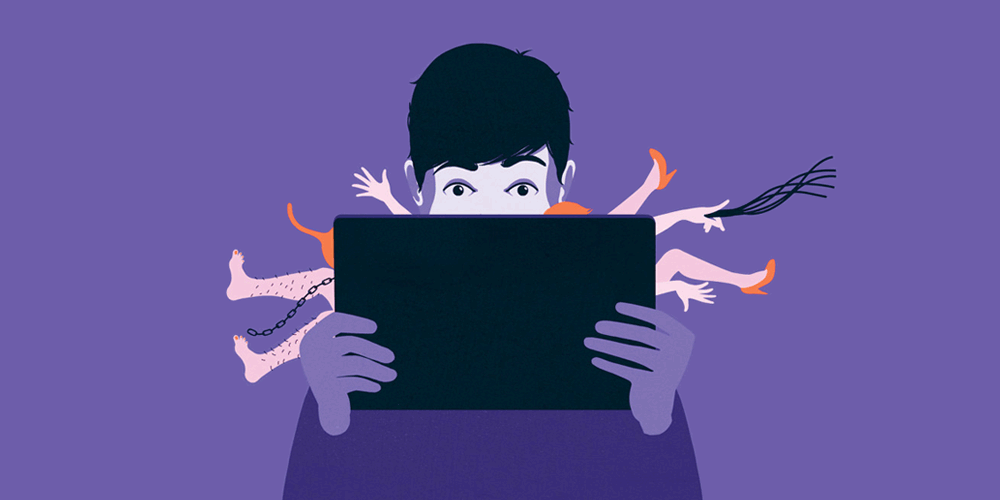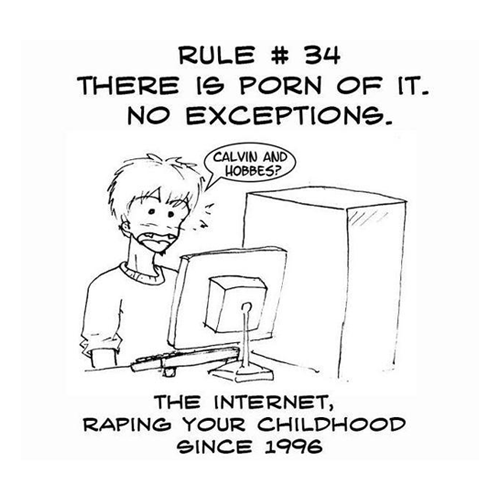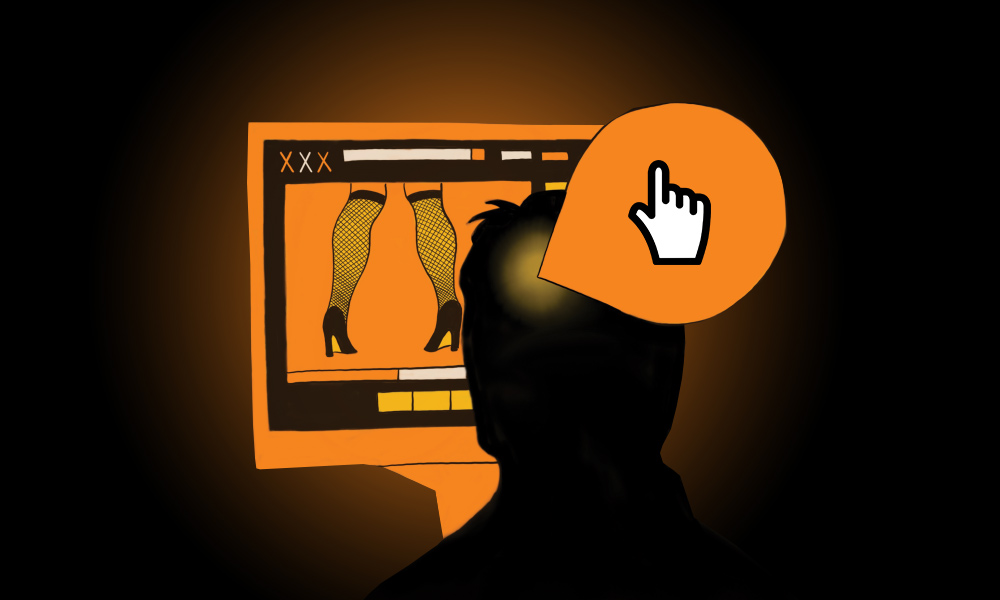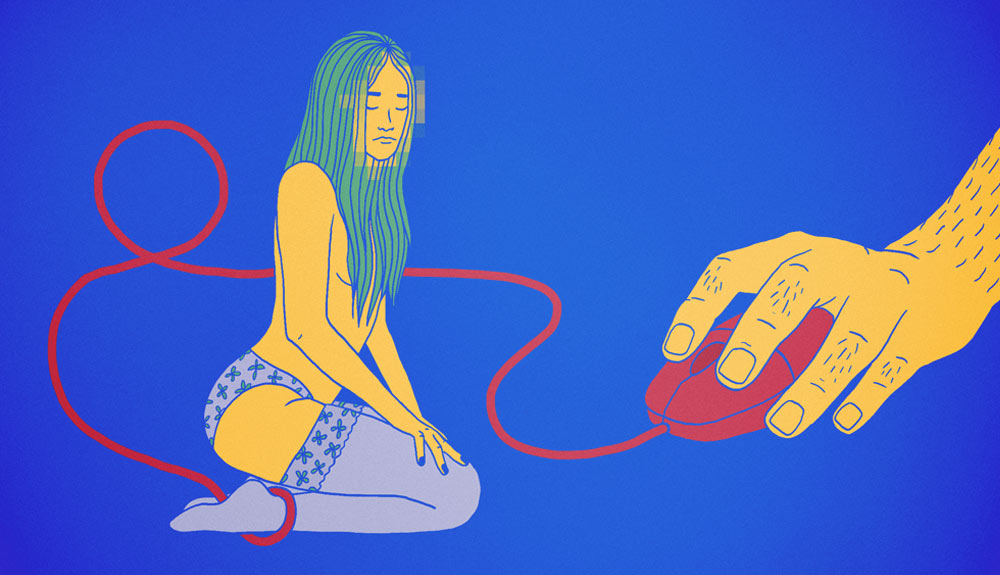The internet has revolutionized countless aspects of people's lives, and the realm of sexuality is no exception.
Pornography was once confined to magazines, tapes and some other mediums, on dusty back rooms. When pornography arrived to the internet, they began their spread through whispered requests, and solo internet browsing.
In the early days of the internet, during the era of dial-up internet, adult content started out as static images hosted on websites that took very long to load. Fast forward, cloud storage and reliable internet connection have evolved internet pornography into a vast ecosystem of videos, live streams, and interactive experiences.
With the advent of social media and adult-related websites that allow streaming of content on demand, most of which can do so for free, pornography sits readily accessible at people's fingertips.

The rapid progression raises questions about societal attitudes, privacy, and the role of technology in shaping our interactions with explicit content.
In fact, this ease of access has sparked a complex conversation about the impact of porn on individuals and society as a whole.
On one hand, internet porn can be a positive force.
For example, it can provide a safe space for exploration, self-discovery, and pleasure for individuals of all genders and sexual orientations. It can also be educational, demystifying sex and promoting positive body image. It can also help those who struggle with intimacy or disability.
Internet pornography, just like pornography that came before it, can be a valuable tool for solo or partnered enjoyment.
However, the landscape of internet porn is not without its dark corners.
The easy availability can lead to compulsive viewing, impacting relationships, work, and mental health.
The unrealistic portrayals of sex and bodies can fuel unrealistic expectations and anxieties, particularly for young people. Additionally, the prevalence of violence, misogyny, and exploitation within some areas of porn can have harmful consequences for viewers and participants alike.
Navigating this complex landscape requires critical thinking and individual awareness.
This happens because the demand for pornography is so high, that pretty much everything imaginable can be present.
The so-called Rule 34 of the internet, for example, asserts that "if something exists, there is porn of it".

In the end, this leads to the boundaries that separate fantasy, and violation.
Not only on the dark web or lesser known porn websites, because even mainstream adult websites can host real rape videos and abuse tapes.
According to Netzpolitik.org, a Berlin-based media company whose mission is to increase internet digital freedom and openness, despite adult websites have taken steps to combat toxic content, a number of extremely abusive and problematic videos still exist on those websites.
The videos in question, include revenge porn content, to videos where the subjects do not seem to be "fully conscious but are apparently being abused for sexual acts," as well as videos of people who "don’t seem to know they’re being filmed, for example on the toilet."
And not just that, because some uploaders who know that their videos do violate privacy and are illegal, named the videos with misspelled words.
This way, these people can still upload sex-trafficking videos on websites where certain queries or categories are banned and not allowed.
But then, there is the fact that these videos deal with people's fantasies.
There are lots of things that arouse certain people, and to those people, they may wish to see rape videos, or acts or voyeurisms.
High in demand, content creators can create videos to garner this specific audience, but staged. This is allowed, and isn't a violation because it doesn't violate anyone's privacy and that the activities were recorded with the subjects' consent.
Due to how many people search for some of these explicit queries, many of the content meant for this particular audience, are simply staged and scripted, and carefully shot to make it seem that the subject is being sexually abused.
For example, many of the links on Google Search's search results for a search term like "schoolgirl" are likely performed by porn stars who play acting like schoolgirls being sexually abused.
Many of these videos are made by production companies, and star lesser known porn stars, in order to make it seem like the videos are "real."
The thing is, there are also many videos similar, made by amateurs, which depict real rape and voyeurisms, for example.
Many of these videos are non-consensual. Many of the videos even have people that are either underaged, or with disabilities.
It's these videos that violate privacy and are illegal.
Read: Mia Khalifa, The Internet Phenomenon That Far Outlived Her Porn Career

Due the amount of videos adult websites receive, despite hiring third-party moderators and even deploying algorithms, it's still difficult for them to filter everything.
While image recognition used by some adult websites allow them to categorize certain porn based on the sex acts depicted in them, there is no way for them to properly differentiate which is consensual sex and which is non-consensual.
Adult websites realize their weakness in this aspect and because of that, despite profiting from hosting those content, they know that they're fighting an uphill battle.
No one wishes to deal with lawsuits due to illegal activities, and this is why many of them have an online form that can be filled out anonymously to flag videos to moderators. Then, others also tweaked their websites, so anonymous users cannot upload any videos, and others tweaked their search function in order to prevent surfacing specific keywords.
But this is not enough, and never will be.
This is because this kind of system puts the burden on people to report the things they see. It literally forces abuse victims, for example, to be re-victimized by desperately searching for and seeing their violation broadcast to the world.
In other words, unless moderators or an occasional external reviewer finds a violating content and report it on a minute-by-minute basis, not everything is going to reported.
That’s a problem because it opens the door for victims of all types to be traumatized again and again rather than preventing the disturbing content from being shared and consumed for “entertainment” in the first place.

Non-consensual pornography involves the distribution of explicit content without the subject's consent. This can include intimate images or videos shared without permission, often with malicious intent.
Such actions can have severe emotional, psychological, and sometimes even physical consequences for the victims.
Victims may experience shame, anxiety, depression, and damage to their personal and professional lives. Relationships can be strained, and trust can be shattered.
Technology plays a role in combating non-consensual pornography.
Some platforms employ advanced algorithms and image recognition tools to detect and prevent the spread of explicit content without consent. Online platforms are increasingly recognizing their responsibility in preventing the sharing of such harmful material.
To prevent non-consensual pornography, prevention is the utmost key aspect.
Raising awareness about the importance of consent and the potential consequences of sharing explicit content without permission is vital. Education campaigns and discussions on digital ethics can contribute to a safer online environment.
In conclusion, addressing non-consensual pornography requires a collective effort from society, technology, and legal systems.
Read: Alyssa Funke: Getting Caught Between Cyberbullies And Amateur Porn